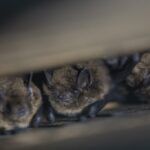 Northwest Trek Wildlife Park and Washington Department of Fish and Wildlife (WDFW) are partnering with scientists from Wildlife Conservation Society Canada (WCSC) to test the effectiveness of a promising new bat-saving treatment to help wild bats survive the effects of white-nose syndrome.
Northwest Trek Wildlife Park and Washington Department of Fish and Wildlife (WDFW) are partnering with scientists from Wildlife Conservation Society Canada (WCSC) to test the effectiveness of a promising new bat-saving treatment to help wild bats survive the effects of white-nose syndrome.
White-nose syndrome has killed millions of hibernating bats in eastern North America and was first discovered in Washington in 2016. State wildlife officials have confirmed white-nose syndrome in King, Chelan, Kittitas, and Pierce counties. The fungus that causes white-nose syndrome has also been confirmed in Lewis, Mason, Snohomish, and Yakima counties.
“If this innovative probiotic spray is effective, it could be revolutionary in saving wild bats in Washington and across the country,” said Abby Tobin, WDFW’s white-nose syndrome coordinator. “The disease affects only hibernating bats and does not affect humans, livestock or other wildlife.”
Northwest Trek is home to one of the largest bat colonies in the South Puget Sound region, with over 350 wild bats living in roosts around the wildlife park.
“We love wild bats at Northwest Trek, and we’re excited to participate in this important research study to give them the best chance of survival,” said Rachael Mueller, the wildlife park’s conservation program coordinator.
Northwest Trek is the control site in the multi-year scientific study to research a probiotic spray intended to stop the spread of white-nose syndrome. At four other sites throughout Washington and British Columbia, scientists are spraying a powdered clay that contains probiotic cells into bat roosts. Once bats enter the box, a layer of the dust is then spread onto their bodies and wings.
The spray contains naturally occurring bacteria and fungi that have been found to inhibit the growth of the fungus that causes white-nose syndrome, giving bats a chance to survive through winter. Bats with the disease awaken more frequently during hibernation, which leads to them burning through the fat reserve they need to survive.
On a recent summer evening, staff and volunteers gathered at the entrance to Northwest Trek where a bat colony lives, with the goal of gently capturing and analyzing dozens of bats.
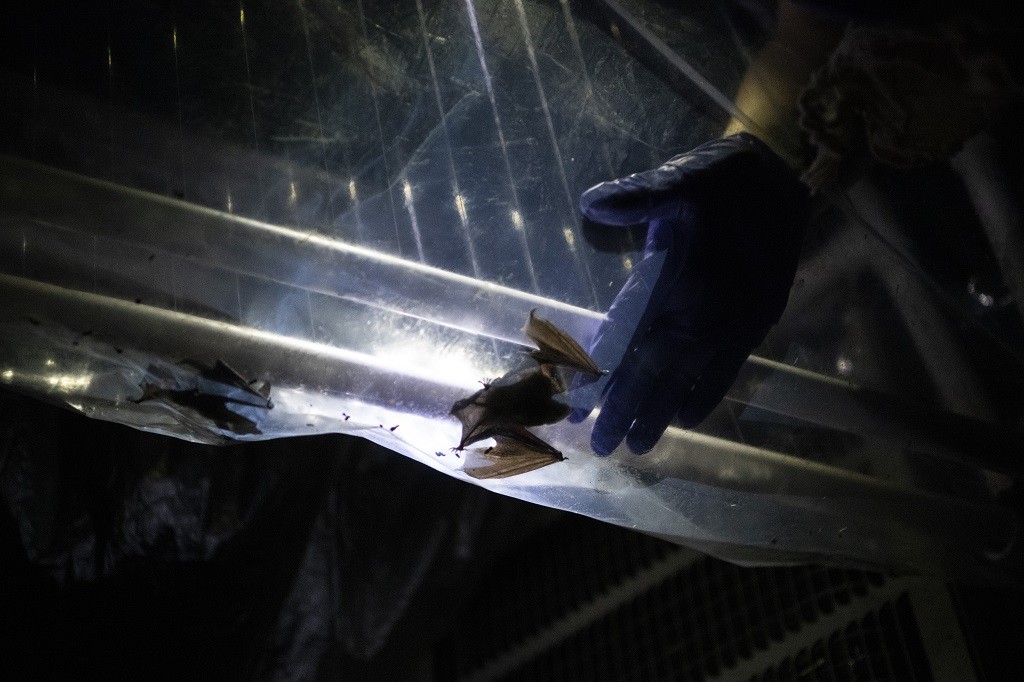
Just after sunset, the bats began to swarm. Many ended up in a specially designed harp trap where rabies-vaccinated researchers and volunteers quickly scooped up the bats before taking them to a nearby table to carefully examine them. They checked the bats’ weights, wing lengths, sex, and pregnancy status (researchers focus their work on maternity roosts). The bats then were tagged with a tiny electronic microchip, similar to microchips inserted into the skin of a pet.
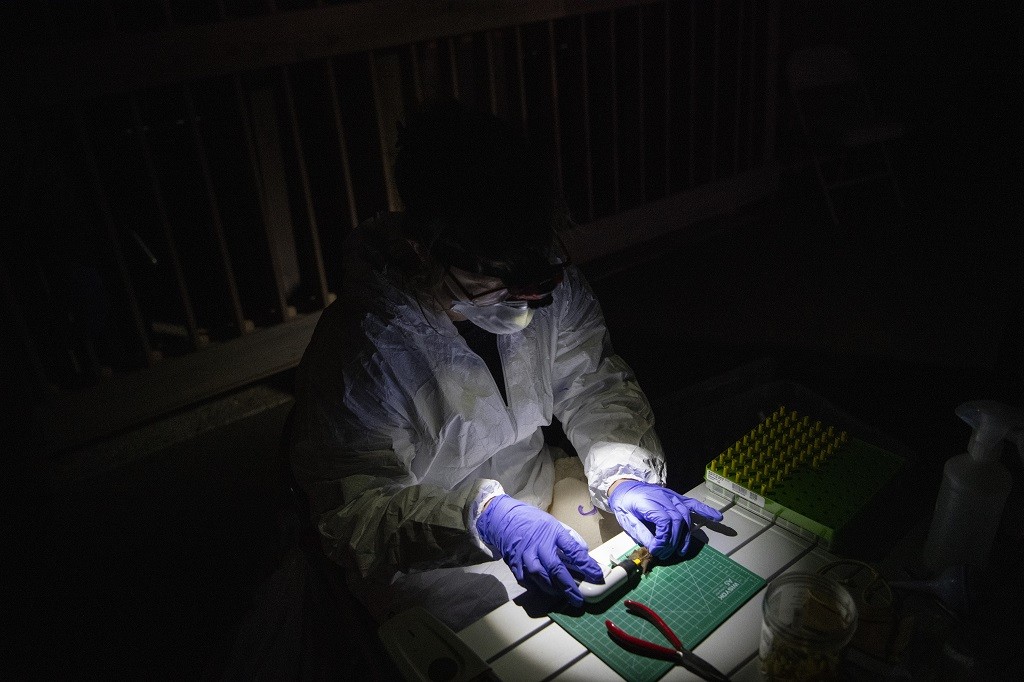
Passive integrated transponder (PIT) readers installed at bat roosts throughout the wildlife park then collect data when a tagged bat goes by. There are similar readers at other sites throughout Washington.
“The microchips allow us to track the bats to learn if they are surviving year after year even with white-nose syndrome,” said Tobin. “We are data-deficient in that area and having that knowledge could inform how we protect bats.”
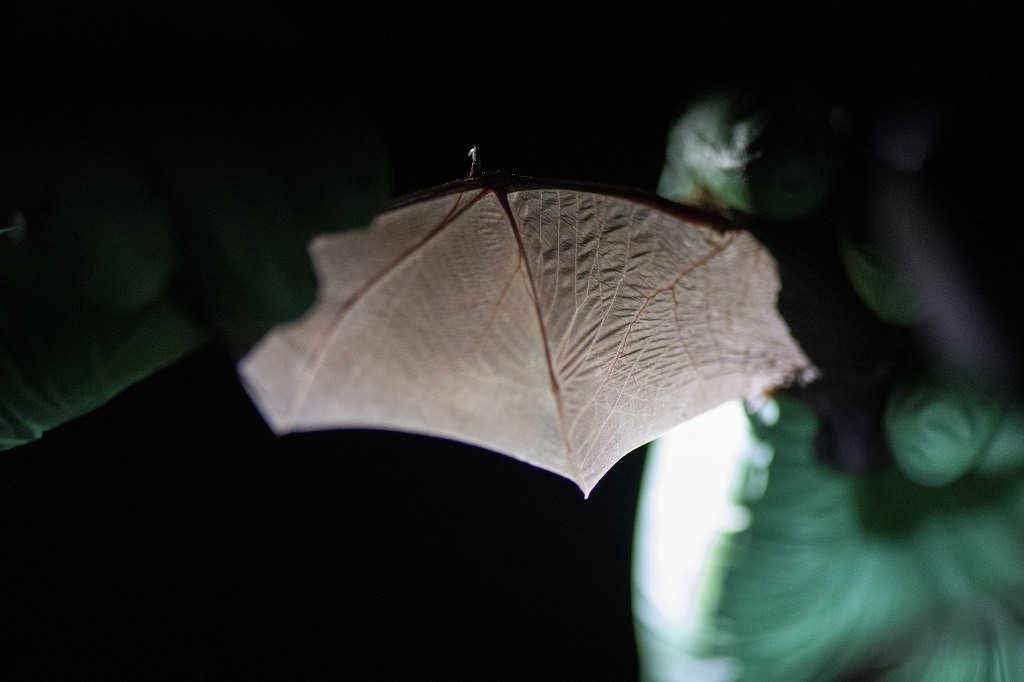
Researchers believe bats in western North America likely don’t hibernate in large colonies like they do in the east (it is unknown where they hibernate), slowing the spread of the disease.
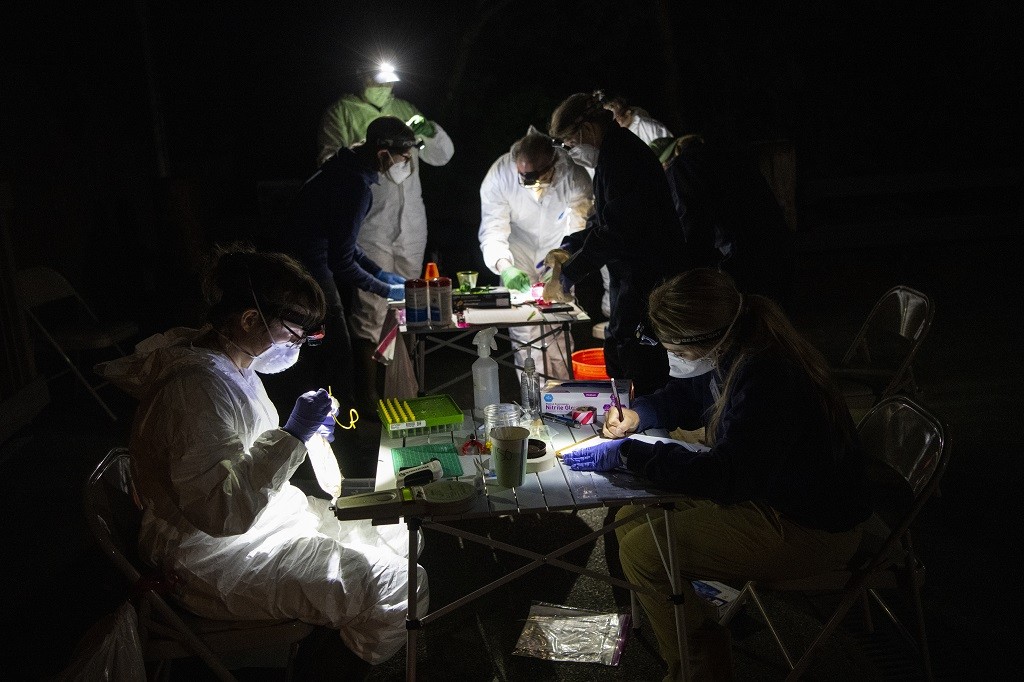
“This scientific study will also be a good monitoring program for bat health in Washington,” said Leah Rensel, WCSC bat biologist. “The project will provide in depth data about bat behavior that is largely unknown in Washington.”
Other major partners in the multi-year research study include McMaster University and Thompson Rivers University.
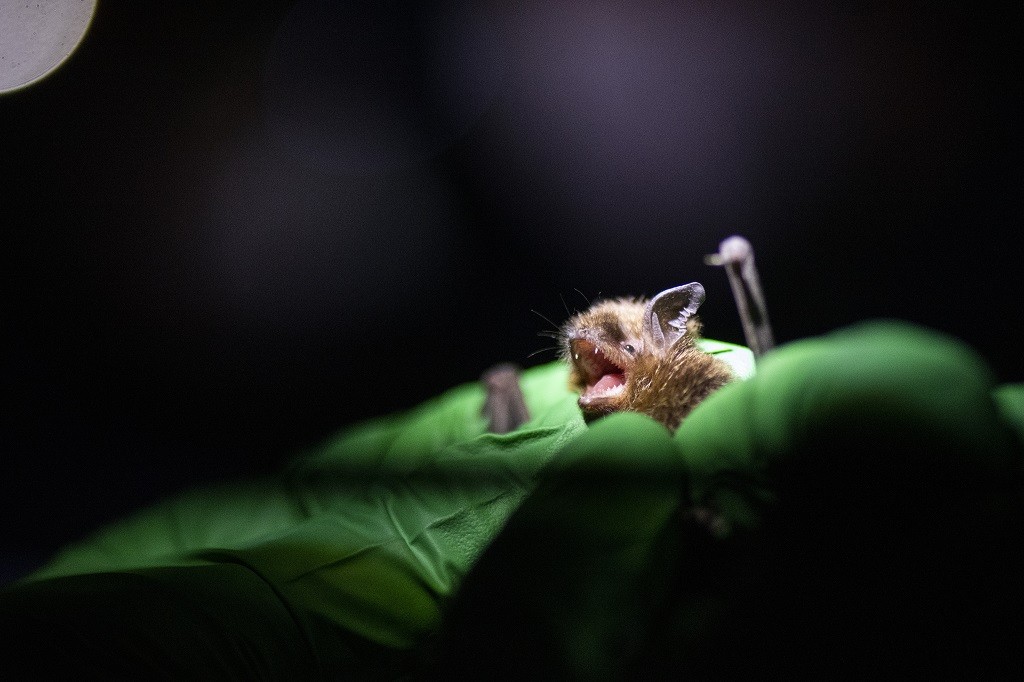
“Bats are amazing animals and play a vital role in our ecosystem, eating enormous quantities of mosquitos, flies and other insects every night,” said Mueller. “We need to do everything we can to protect them and ensure they continue to thrive in Washington.”
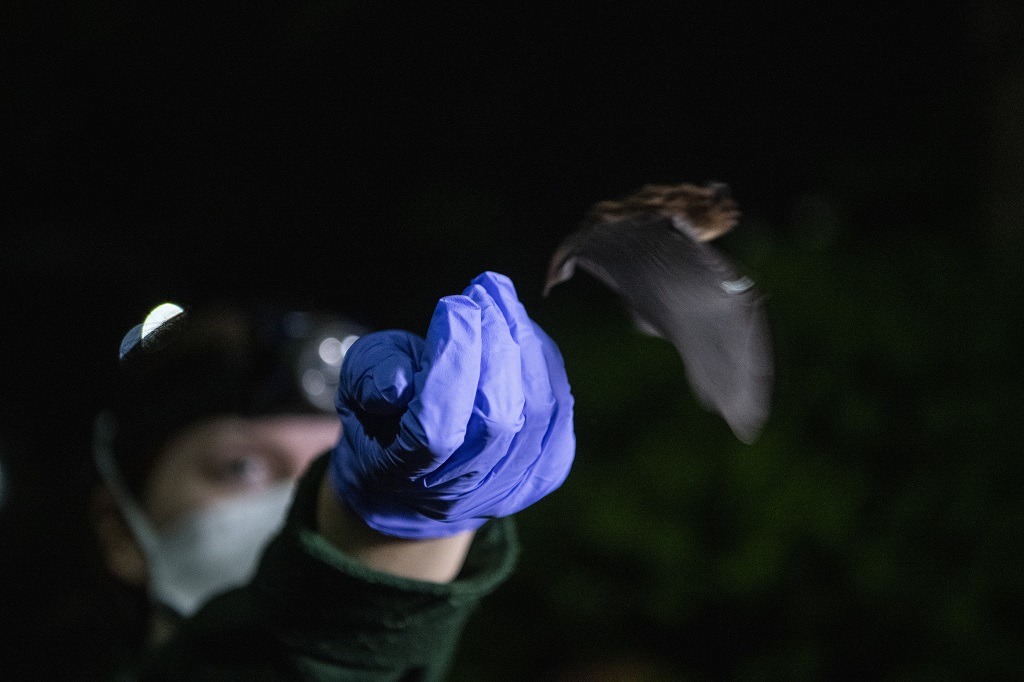
Do Your Part to Protect Bats
We can all help prevent white-nose syndrome from spreading around bat colonies.
- If you ever see sick or dead bats, report them to the Washington Department of Fish and Wildlife at 360-902-2515 or wdfw.wa.gov/bats
- Avoid entering areas where bats may be living to limit the potential of transmitting the fungus that causes the disease and disturbing vulnerable bats.
- Do not allow pets to access areas where bats may be roosting or overwintering as they may carry the fungus to new sites.
- Help improve bat habitats by reducing lighting around your home, minimize tree clearing, and protect streams and wetlands.
- Incorporate one or more snags into your landscape, keeping old and damaged trees when possible. Snags provide important habitat for bats and other backyard wildlife.
Watch the Video:
A reminder to NEVER handle a live bat with your bare hands. White-nose syndrome does not pose a threat to humans, pets or other animals but the bat could be infected with rabies.